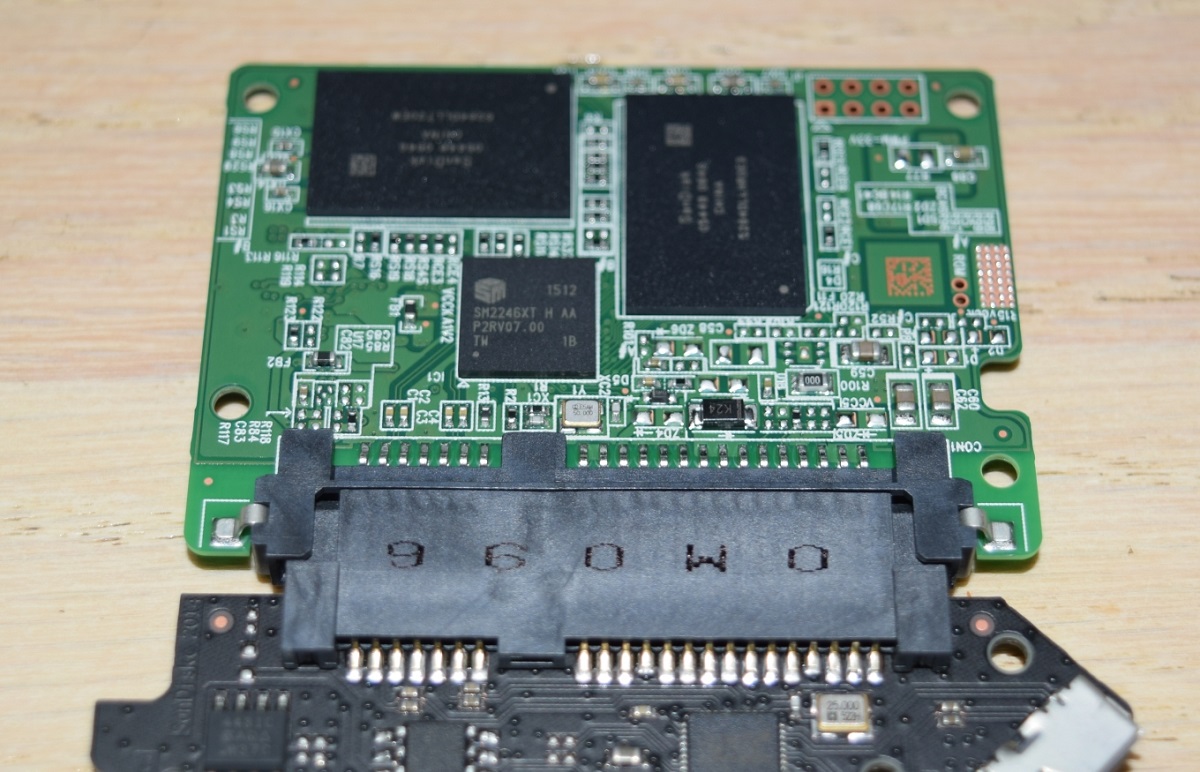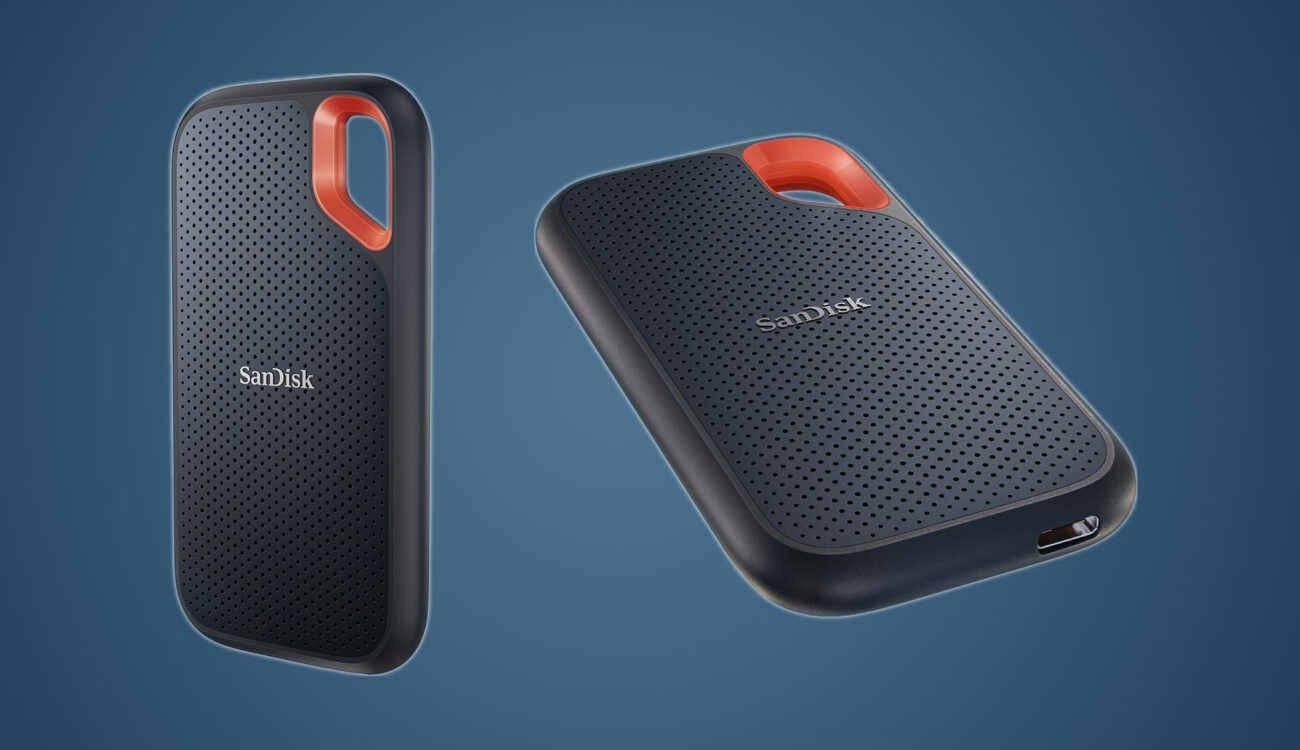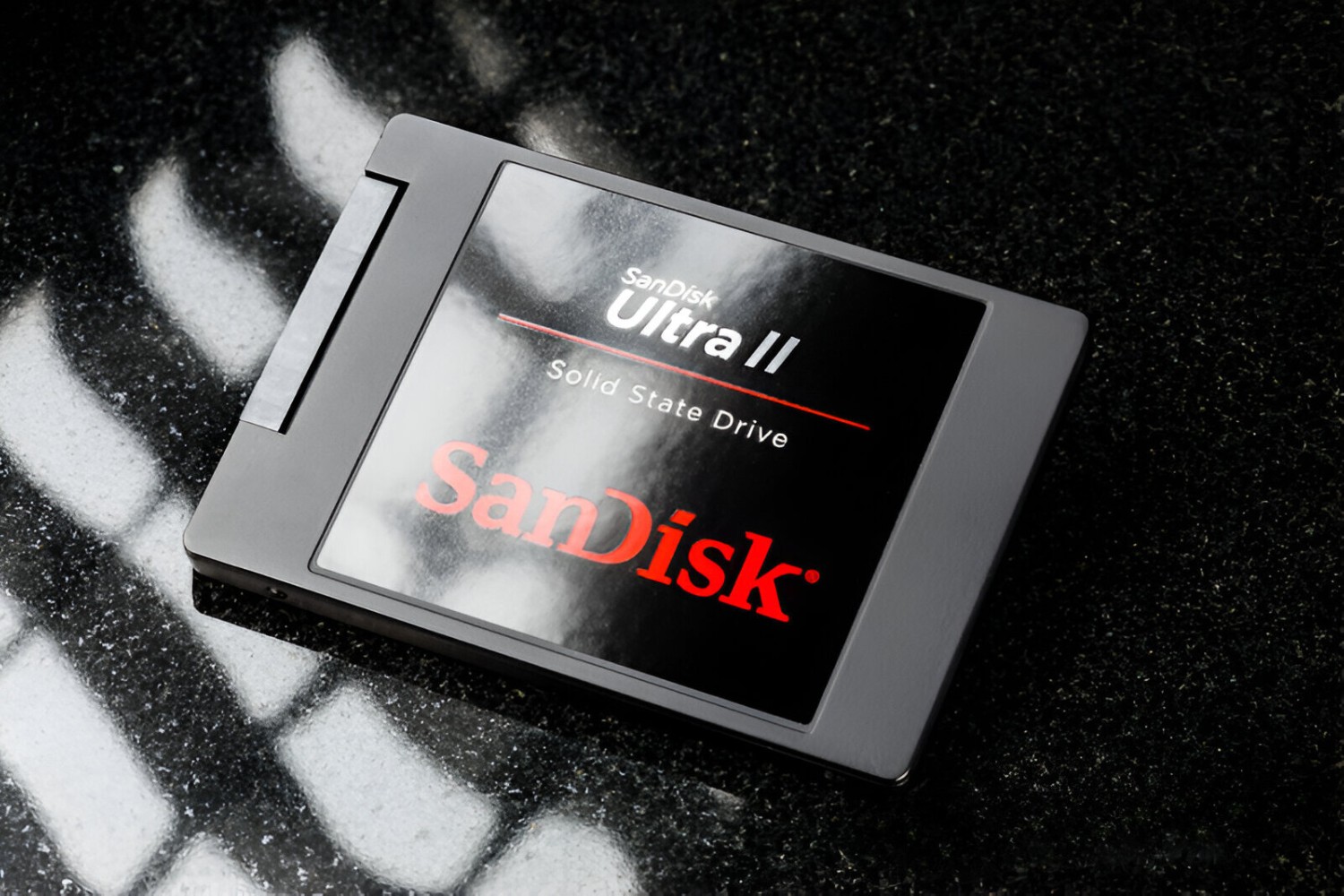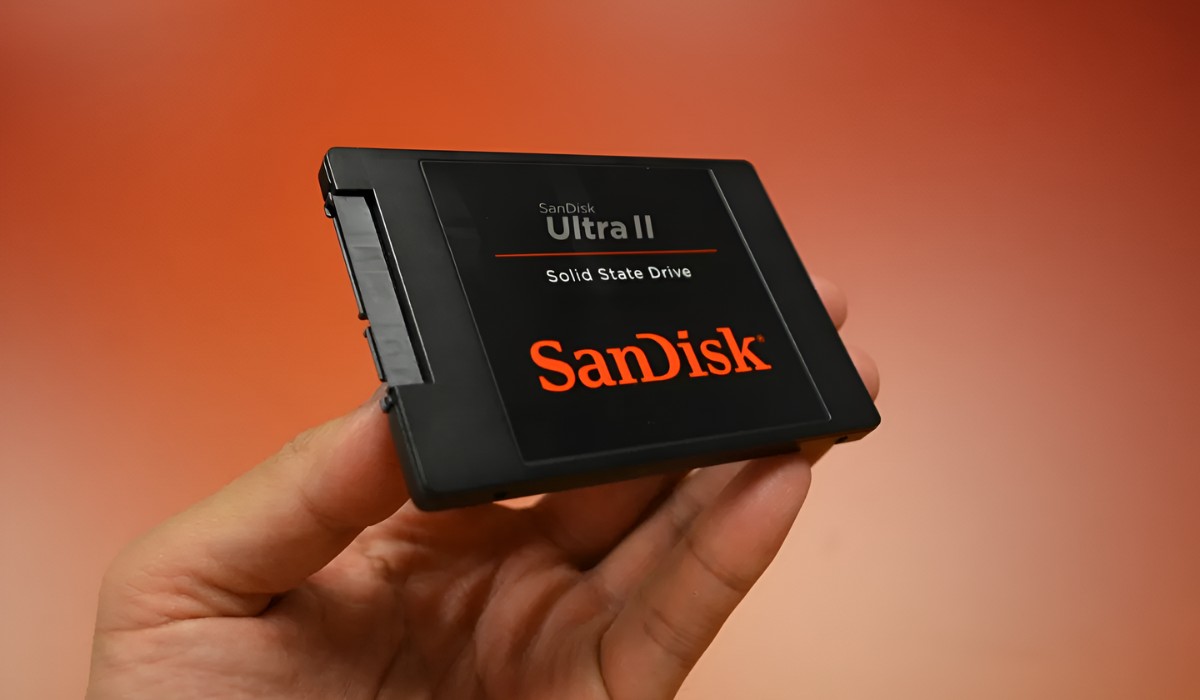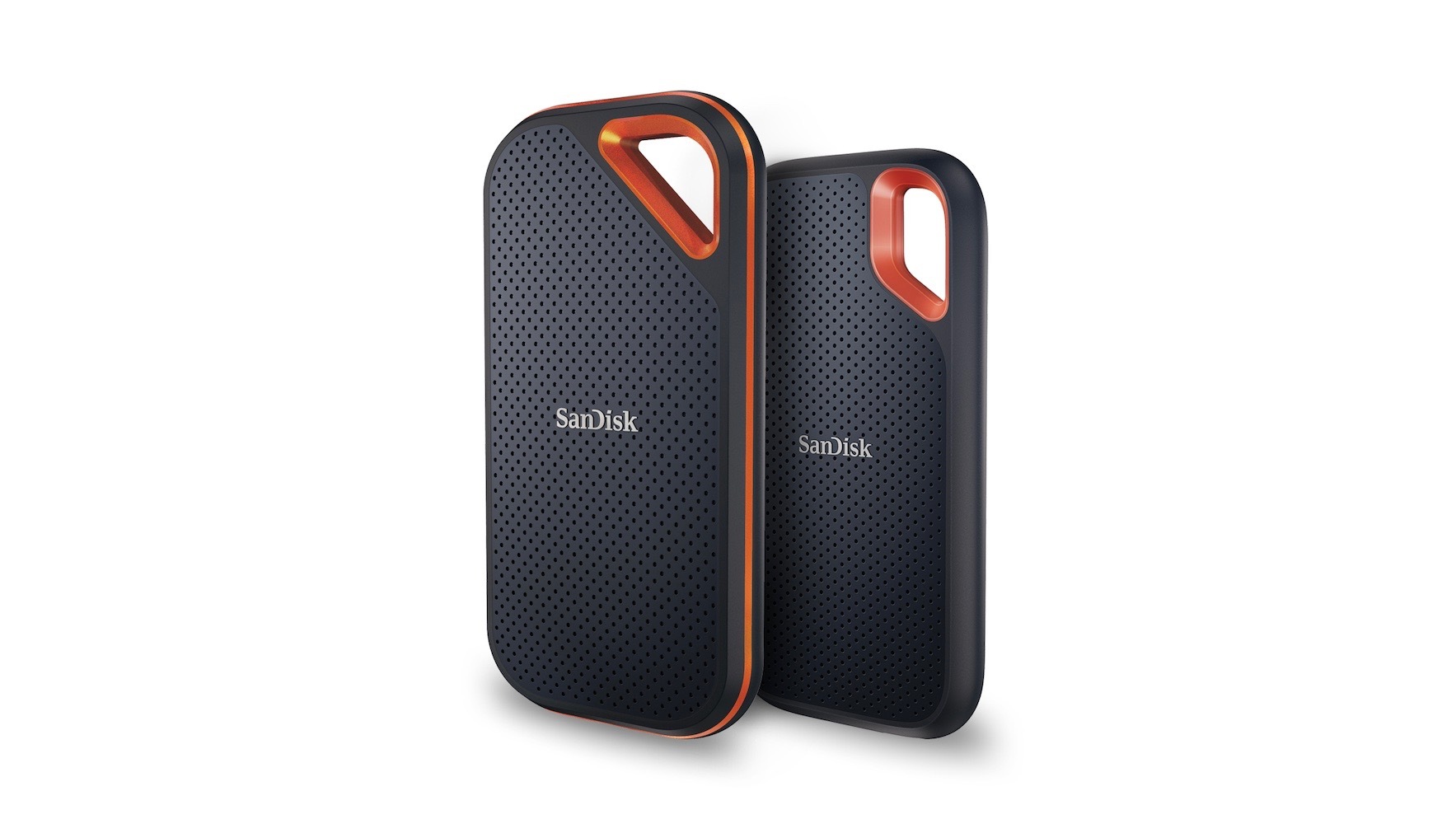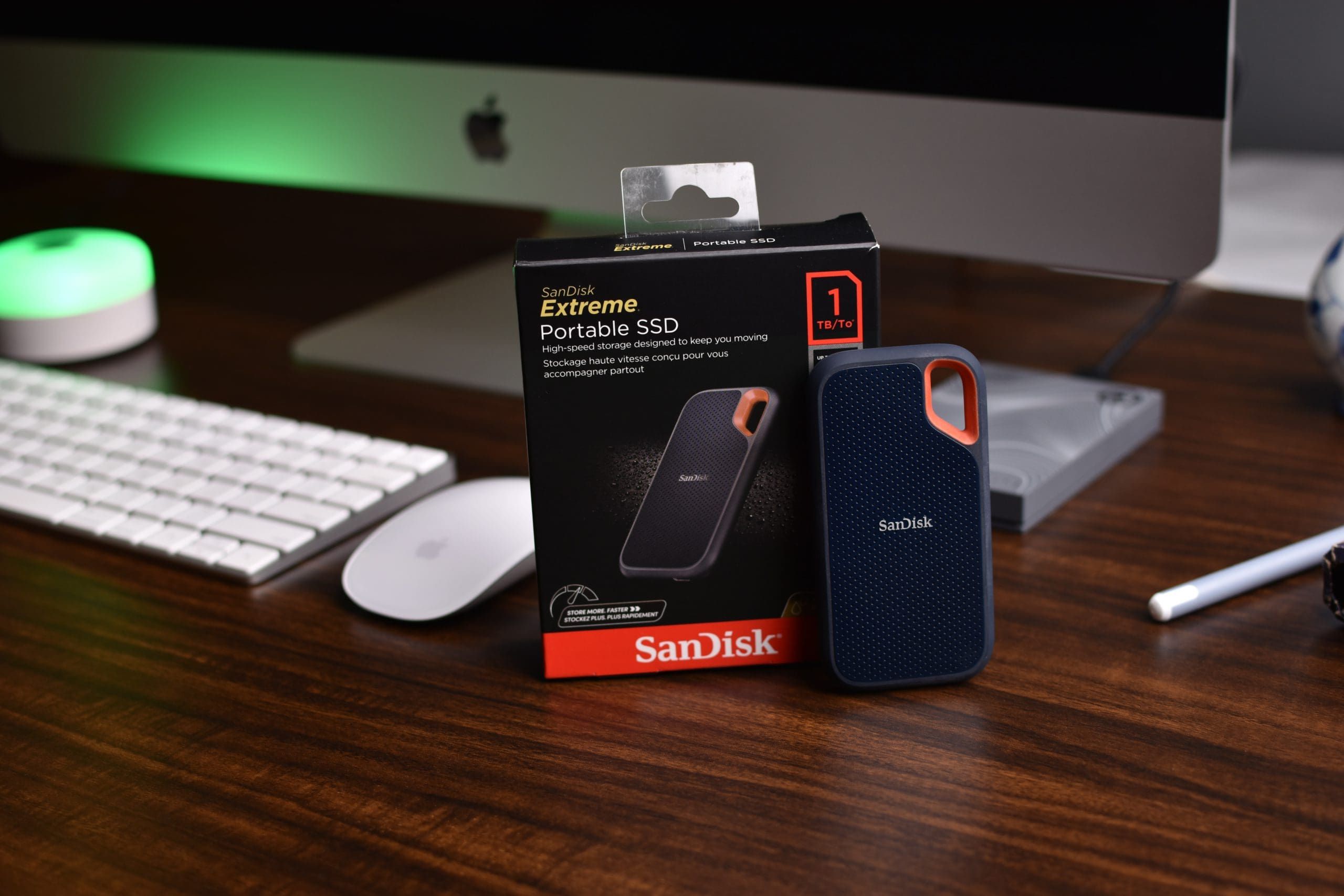Introduction
Welcome to our guide on how to add storage space using the SanDisk Extreme 500 Portable SSD. In today’s digital age, where we are constantly creating and storing large amounts of data, having enough storage capacity is essential. The SanDisk Extreme 500 Portable SSD provides a convenient and reliable solution to expand your storage space while offering high performance and durability.
Whether you are a professional photographer, videographer, or simply an avid user who needs to store large files, the SanDisk Extreme 500 Portable SSD is designed to meet your needs. With its compact and rugged design, this portable SSD allows you to store and backup your files on the go, ensuring your data is safe and easily accessible.
In this guide, we will walk you through the process of setting up and using the SanDisk Extreme 500 Portable SSD. We will cover everything from connecting the device to your computer, formatting it, transferring files, organizing folders, and maximizing its performance. By the end of this guide, you will have a clear understanding of how to effectively utilize the SanDisk Extreme 500 Portable SSD to expand your storage capacity.
So, let’s dive in and discover how to unleash the full potential of your SanDisk Extreme 500 Portable SSD. Whether you are a beginner or an advanced user, this guide will provide you with all the necessary steps and tips to make the most out of your portable storage device.
Understanding the SanDisk Extreme 500 Portable SSD
The SanDisk Extreme 500 Portable SSD is a compact and portable solid-state drive that allows you to store and transfer files with ease. Unlike traditional hard drives, which rely on moving parts, the SanDisk Extreme 500 uses flash memory technology, making it faster, more durable, and less prone to damage from shocks or drops.
With its sleek and rugged design, the SanDisk Extreme 500 Portable SSD is built to withstand the rigors of travel and outdoor adventures. It features a shock-resistant core that protects your data from accidental drops or impacts. Its compact size and lightweight construction make it a perfect companion for photographers, videographers, and anyone who needs to carry and access large amounts of data on the go.
The SanDisk Extreme 500 Portable SSD comes in various storage capacities, ranging from 250GB to 2TB, allowing you to choose the size that best suits your needs. It also offers fast transfer speeds, with read speeds of up to 415MB/s and write speeds of up to 340MB/s, ensuring quick and efficient file transfers.
In addition to its impressive performance, the SanDisk Extreme 500 Portable SSD is compatible with both Windows and Mac operating systems, making it versatile and easy to use. Simply connect it to your computer using the included USB cable, and you’re ready to go.
One of the standout features of the SanDisk Extreme 500 Portable SSD is its encryption capabilities. With 128-bit AES encryption, you can password protect your files and ensure that your sensitive data remains secure. This feature adds an extra layer of protection to your files, giving you peace of mind knowing that your information is safe.
Overall, the SanDisk Extreme 500 Portable SSD combines speed, durability, and portability to provide a reliable and efficient storage solution. Whether you need to store photos, videos, music, or documents, this SSD offers the capacity and performance to meet your storage needs. In the following sections, we will guide you through the process of adding and utilizing the storage space provided by the SanDisk Extreme 500 Portable SSD.
Step-by-Step Guide to Adding Storage Space
Adding storage space with the SanDisk Extreme 500 Portable SSD is a straightforward process. Follow these steps to effectively expand your storage capacity:
- Step 1: Connect the SanDisk Extreme 500 Portable SSD to Your Computer
- Step 2: Formatting the SanDisk Extreme 500 Portable SSD
- On Windows: Open File Explorer and locate the SanDisk Extreme 500 Portable SSD. Right-click on it and select “Format”. Choose the desired file system (NTFS is recommended for Windows) and click “Start” to begin the formatting process.
- On Mac: Open Disk Utility from the Applications folder. Select the SanDisk Extreme 500 Portable SSD from the list on the left. Click on the “Erase” tab and choose the desired format (APFS or Mac OS Extended). Finally, click “Erase” to format the SSD.
- Step 3: Transferring Files to the SanDisk Extreme 500 Portable SSD
- Step 4: Organizing Files and Folders on the SanDisk Extreme 500 Portable SSD
- Step 5: Safely Ejecting the SanDisk Extreme 500 Portable SSD
Start by connecting the SanDisk Extreme 500 Portable SSD to your computer using the included USB cable. Ensure that both ends of the cable are securely plugged in. The SSD will be automatically recognized by your computer.
Before you can start using the SanDisk Extreme 500 Portable SSD, you need to format it. Formatting will prepare the SSD for use on your computer’s operating system. To format the SSD, follow these steps:
Once the formatting is complete, you can start transferring files to the SanDisk Extreme 500 Portable SSD. Simply drag and drop the files from your computer to the SSD’s designated folder. You can organize your files into different folders for better file management.
To keep your files organized, create folders on the SanDisk Extreme 500 Portable SSD for different types of content. For example, you can have separate folders for documents, photos, videos, and music. This will make it easier to locate and access your files when needed.
Before unplugging the SanDisk Extreme 500 Portable SSD from your computer, you should always safely eject it. On Windows, right-click on the SSD in File Explorer and select “Eject”. On Mac, drag the SSD icon from the desktop to the Trash bin.
By following these simple steps, you can successfully add storage space using the SanDisk Extreme 500 Portable SSD and efficiently manage your files. In the next section, we will explore ways to maximize the performance of your portable SSD.
Connecting the SanDisk Extreme 500 Portable SSD to Your Computer
Connecting the SanDisk Extreme 500 Portable SSD to your computer is a quick and simple process. Follow these steps to establish a connection:
- Step 1: Prepare the SanDisk Extreme 500 Portable SSD
- Step 2: Locate the USB Port on Your Computer
- Step 3: Connect the SanDisk Extreme 500 Portable SSD
- Step 4: Plug the USB Cable into Your Computer
- Step 5: Wait for the Computer to Recognize the SanDisk Extreme 500 Portable SSD
- Step 6: Access the SanDisk Extreme 500 Portable SSD
Ensure that the SanDisk Extreme 500 Portable SSD is charged or has power through the USB connection. Confirm that the USB cable provided with the SSD is in good condition and free from any damage.
Identify the available USB port on your computer. The SanDisk Extreme 500 Portable SSD connects via a USB Type-A or USB Type-C port, depending on the model and cable included. Make sure that the port matches the cable you have or use an appropriate adapter.
Insert one end of the USB cable into the corresponding port on the SanDisk Extreme 500 Portable SSD. Ensure that the connection is secure and the cable is firmly inserted into the port.
Take the other end of the USB cable and insert it into the matching USB port on your computer. Again, ensure that the connection is snug and secure.
After connecting the SanDisk Extreme 500 Portable SSD to your computer, it may take a few seconds for the computer to recognize the device. During this time, you may hear a sound or see a notification confirming the connection.
Once the computer recognizes the SanDisk Extreme 500 Portable SSD, you can access it like any other external storage device. Open File Explorer on Windows or Finder on Mac to view the SSD and its contents.
That’s it! You are now connected and ready to use the SanDisk Extreme 500 Portable SSD with your computer. In the next section, we will cover the process of formatting the SSD to prepare it for use.
Formatting the SanDisk Extreme 500 Portable SSD
Before you can start using the SanDisk Extreme 500 Portable SSD, you need to format it to ensure compatibility with your computer’s operating system. Follow these steps to format the SSD:
- Step 1: Windows
- Step 2: Right-click and Select “Format”
- Step 3: Choose File System
- Step 4: Adjust Allocation Unit Size (optional)
- Step 5: Speed Format (optional)
- Step 6: Start Formatting
- Step 7: Wait for Formatting to Complete
- Step 8: Format Confirmation
If you are using a Windows computer, open File Explorer and locate the SanDisk Extreme 500 Portable SSD.
Right-click on the SSD and select the “Format” option from the drop-down menu. A new window will appear.
In the format window, choose the desired file system for the SSD. For Windows, it is recommended to select NTFS for optimal performance and compatibility. You can also assign a name to the drive if you prefer.
You can choose to adjust the allocation unit size, but it is recommended to leave it at the default setting for most users.
If you want a faster formatting process, you can enable the “Quick Format” option. However, note that a quick format does not check for bad sectors on the SSD.
Once you have selected the desired settings, click the “Start” button to begin the formatting process. A warning prompt may appear, confirming that all data on the SSD will be erased. Make sure you have backed up any important files before proceeding.
The formatting process may take a few minutes. During this time, it is important not to disconnect the SSD or interrupt the process.
Once the formatting is complete, you will receive a confirmation message. Click “OK” to exit the formatting window.
After formatting the SanDisk Extreme 500 Portable SSD, it will be ready for use with your Windows computer. In the next section, we will discuss the process of transferring files to the SSD.
Transferring Files to the SanDisk Extreme 500 Portable SSD
Transferring files to the SanDisk Extreme 500 Portable SSD is a simple process that allows you to quickly and easily backup or transfer your important data. Follow these steps to transfer files to the SSD:
- Step 1: Connect the SanDisk Extreme 500 Portable SSD
- Step 2: Open File Explorer or Finder
- Step 3: Locate the Files
- Step 4: Select the Files
- Step 5: Copy or Cut the Files
- Step 6: Open the SanDisk Extreme 500 Portable SSD
- Step 7: Paste the Files
- Step 8: Wait for File Transfer to Complete
- Step 9: Verify File Transfer
Ensure that your SanDisk Extreme 500 Portable SSD is properly connected to your computer as described in the previous section.
Open File Explorer on Windows or Finder on Mac to view the files and folders on your computer.
Navigate to the location where the files you wish to transfer are stored on your computer. This could be in a specific folder or on your desktop.
Click and drag your mouse over the files or folders you want to transfer, or hold down the “Ctrl” key (or “Cmd” key on Mac) and click on individual files to select them.
Right-click on the selected files and choose either “Copy” or “Cut” from the context menu. Alternatively, use the keyboard shortcuts “Ctrl + C” to copy or “Ctrl + X” to cut the files.
In File Explorer or Finder, locate and open the SanDisk Extreme 500 Portable SSD to view its contents.
Right-click inside the SSD window and select “Paste” from the context menu. Alternatively, use the keyboard shortcut “Ctrl + V” to paste the files into the SSD.
Depending on the size and number of files being transferred, the process may take a few seconds or longer. Ensure that the transfer is complete before disconnecting the SSD.
Once the files have been transferred, you can browse the SanDisk Extreme 500 Portable SSD to ensure that the files are present and accessible.
That’s it! You have successfully transferred your files to the SanDisk Extreme 500 Portable SSD. You can repeat these steps to transfer additional files or folders as needed. In the following section, we will discuss organizing files and folders on the SSD for better file management.
Organizing Files and Folders on the SanDisk Extreme 500 Portable SSD
Organizing your files and folders on the SanDisk Extreme 500 Portable SSD can greatly improve your ability to locate and access your data. Follow these steps to effectively organize your files:
- Step 1: Create Folders
- Step 2: Categorize Your Files
- Step 3: Move or Copy Files to Folders
- Step 4: Delete Unnecessary Files
- Step 5: Rename Files and Folders
- Step 6: Maintain Consistent Naming Conventions
- Step 7: Backup Your Organized SSD
To keep your files well-organized, create folders on the SanDisk Extreme 500 Portable SSD. Right-click inside the SSD window and select “New Folder” to create a new folder. Give the folder a descriptive name that reflects its contents.
Based on the type or purpose of your files, categorize them into different folders. For example, you might create separate folders for documents, photos, videos, and music. This will make it easier to locate specific files when you need them.
Click and drag the files from the main SSD window into the appropriate folders. If you want to keep a copy of the file in its original location, hold down the “Ctrl” key (or “Cmd” key on Mac) while dragging to create a copy instead of moving the file.
Regularly review your files on the SanDisk Extreme 500 Portable SSD and delete any unnecessary or redundant files. This will help free up storage space and keep your SSD clutter-free.
If you want to further organize your files, consider renaming them to more descriptive names. Right-click on a file or folder and select “Rename” to change its name to something that better represents its content.
To make it easier to locate files, try to maintain consistent naming conventions across your folders. Use clear and meaningful names that indicate the content or purpose of the file.
Regularly backup the organized files on your SanDisk Extreme 500 Portable SSD to ensure that your data remains safe. Consider using cloud storage or making a separate backup on another storage device.
By organizing your files and folders on the SanDisk Extreme 500 Portable SSD, you can simplify file management and improve your productivity. In the next section, we will discuss the proper method for safely ejecting the SSD from your computer.
Safely Ejecting the SanDisk Extreme 500 Portable SSD
It’s important to safely eject the SanDisk Extreme 500 Portable SSD from your computer to ensure that your data is not corrupted and that the SSD is not damaged. Follow these steps to safely eject the SSD:
- Step 1: Windows
- Step 2: Right-click on the SSD
- Step 3: Wait for Confirmation
- Step 4: Mac
- Step 5: Drag the SSD Icon to the Trash
- Step 6: Wait for Confirmation
- Step 7: Physically Disconnect the SSD
If you are using a Windows computer, locate the SanDisk Extreme 500 Portable SSD in the File Explorer.
Right-click on the SSD and select “Eject” from the drop-down menu. This will safely remove the SSD from your computer.
Wait for the confirmation message that says it is safe to remove the SanDisk Extreme 500 Portable SSD. Do not disconnect the SSD until you receive this confirmation.
If you are using a Mac computer, locate the SanDisk Extreme 500 Portable SSD in the Finder.
Drag the SSD icon from the desktop or Finder window to the Trash bin in the Dock. This will initiate the ejection process.
Wait for the confirmation message that says it is safe to remove the SanDisk Extreme 500 Portable SSD. Do not disconnect the SSD until you receive this confirmation.
Once you have received the confirmation message, you can safely disconnect the SanDisk Extreme 500 Portable SSD from your computer by gently unplugging the USB cable from both the SSD and your computer’s USB port.
By following these steps to safely eject the SanDisk Extreme 500 Portable SSD, you can prevent data loss and potential damage to the SSD. Remember, it is important to always follow the proper procedure before disconnecting any external storage device from your computer.
In the next section, we will discuss ways to maximize the performance of your SanDisk Extreme 500 Portable SSD.
Maximizing the Performance of Your SanDisk Extreme 500 Portable SSD
To ensure optimal performance and longevity of your SanDisk Extreme 500 Portable SSD, follow these tips and best practices:
- Enable TRIM (Windows)
- Keep the SSD Firmware Updated
- Avoid Overfilling the SSD
- Minimize Writes to the SSD
- Regularly Back Up Your SSD
- Keep the SSD Cool
- Avoid Physical Shocks
- Scan for Errors Regularly
If you are using the SSD with a Windows computer, make sure TRIM is enabled. TRIM helps improve the SSD’s performance by allowing your operating system to communicate with the SSD more efficiently. To enable TRIM, open the Command Prompt as an administrator and type in “fsutil behavior set DisableDeleteNotify 0”.
Check for firmware updates regularly and install them when available. Firmware updates can provide performance improvements and address any potential bugs or issues with the SSD.
It is recommended to leave a portion of your SanDisk Extreme 500 Portable SSD’s storage space unused. Overfilling the SSD can lead to performance degradation and reduce the lifespan of the drive. Aim to keep at least 10-20% of the SSD’s total capacity free.
Excessive writing to the SSD can impact its performance and lifespan. Avoid unnecessary write operations such as excessive file downloads, temporary file storage, or constant file modifications. Instead, use the SSD for long-term storage and frequently accessed files.
Even though the SanDisk Extreme 500 Portable SSD is reliable, it is always prudent to back up your data regularly. Create a backup routine to safeguard your important files in case of accidental deletion, drive failure, or other unforeseen circumstances.
Avoid exposing the SanDisk Extreme 500 Portable SSD to excessive heat. High temperatures can negatively impact the performance and lifespan of the drive. Store the SSD in a cool and dry environment when not in use.
While the SanDisk Extreme 500 Portable SSD is designed to be durable, it is still important to protect it from physical shocks or drops. Handle the SSD with care and consider using a protective case or sleeve when traveling with the device.
Use disk utility software or the built-in error-checking tools provided by your operating system to scan the SanDisk Extreme 500 Portable SSD for any potential errors. Regular scanning helps identify and resolve issues that could impact performance.
By following these recommendations, you can maximize the performance and lifespan of your SanDisk Extreme 500 Portable SSD. Remember, proper care and maintenance will ensure the longevity and reliability of your valuable data storage device.
Troubleshooting Common Issues
While the SanDisk Extreme 500 Portable SSD is a reliable device, there may be instances where you encounter some common issues. Here are a few troubleshooting steps to help address these issues:
- Issue: Unable to Detect the SSD
- Ensure the USB cable is securely connected to both the SSD and your computer.
- Try connecting the SSD to a different USB port on your computer.
- Update the USB drivers on your computer or try connecting the SSD to another computer to determine if it’s a hardware or software issue.
- Issue: Slow Transfer Speeds
- Check if the SSD is connected to a USB 3.0 or higher port for optimal data transfer speeds.
- Ensure the SSD is not nearing its storage capacity limit, as a full drive can lead to slower performance.
- Close any unnecessary background applications or processes that may be affecting system resources.
- Update the SSD firmware to the latest version to potentially resolve any performance-related issues.
- Issue: File Corruption or Data Loss
- Ensure that you safely eject the SSD from your computer before disconnecting it to prevent data loss or corruption.
- Run a file system check or disk repair utility provided by your operating system to detect and address any file system errors.
- Regularly back up your data to an alternative storage device or cloud storage service to minimize the risk of data loss.
- Issue: SSD Not Recognized on Mac
- Check if the SSD is compatible with the macOS version you are using. Visit the SanDisk website for any available driver or firmware updates specific to your macOS version.
- Connect the SSD to a different USB port on your Mac or try using a different USB cable to rule out any hardware-related issues.
- Restart your Mac and try connecting the SSD again to see if it is recognized.
If your computer is unable to detect the SanDisk Extreme 500 Portable SSD, try the following:
If you are experiencing slow transfer speeds with the SanDisk Extreme 500 Portable SSD, consider these solutions:
If you encounter file corruption or data loss on the SanDisk Extreme 500 Portable SSD, consider these steps:
If your SanDisk Extreme 500 Portable SSD is not recognized on a Mac, try the following:
If you continue to experience issues with your SanDisk Extreme 500 Portable SSD, it is recommended to reach out to SanDisk customer support for further assistance. They will be able to provide specific troubleshooting steps or offer potential solutions based on your particular situation.
Conclusion
The SanDisk Extreme 500 Portable SSD is a versatile and reliable storage solution that offers convenience, speed, and durability. In this guide, we have covered the essential steps to add storage space using the SanDisk Extreme 500 Portable SSD, from connecting it to your computer to safely ejecting it. We also explored how to format the SSD, transfer files, organize folders, maximize performance, and troubleshoot common issues.
By following the step-by-step instructions provided, you can easily expand your storage capacity and enjoy the benefits of fast and efficient file transfers. Whether you are a professional photographer, videographer, or simply someone who needs extra storage for your files, the SanDisk Extreme 500 Portable SSD provides the flexibility and reliability you need.
Remember to take proper care of your SanDisk Extreme 500 Portable SSD by keeping it cool, avoiding physical shocks, and regularly updating its firmware. Maintaining a backup routine is also crucial to protect your valuable files and prevent data loss.
Now that you have a comprehensive understanding of how to make the most out of your SanDisk Extreme 500 Portable SSD, it’s time to start expanding your storage space and enjoying the benefits of fast and reliable file storage and transfer. Embrace the convenience and flexibility that the SanDisk Extreme 500 Portable SSD provides, and never worry about running out of storage space again.







